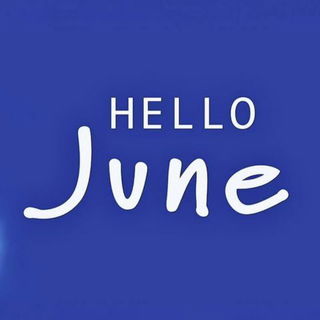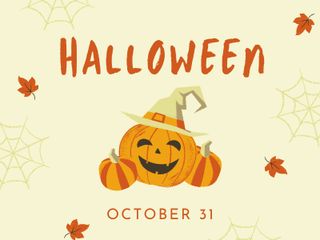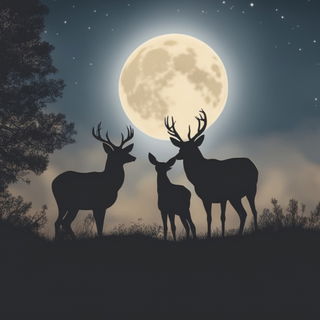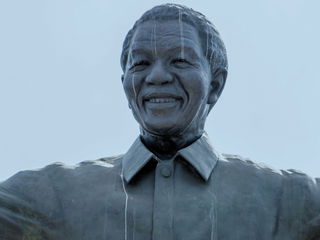- Calendar
- Calendar 2025
- December
- New Year's Eve
New Year's Eve
New Year's Eve, December 31, is a major celebration in the USA. Although New Year's Day is a federal holiday, New Year's Eve is not, so most businesses will operate holiday working hours. However, in a few states such as Kentucky, Michigan, and Wisconsin, it is a day off.
Families and friends travel to be together or to go to significant outside celebration spots, like New York, in order to welcome the new year together. Due to this, there can be congestion and closed roads, so check in advance before making any journey.
History of New Year's Eve
New Year's Eve, celebrated on the night of December 31st, marking the end of one year and the beginning of the next, has a rich history that has evolved over centuries and across various cultures.
The origins of New Year's Eve can be traced back to ancient civilizations. The Babylonians are among the earliest known celebrants, with a festival known as Akitu. It took place during the spring equinox, around late March, coinciding with the planting of crops. This festival lasted 12 days and included religious rituals and the crowning of a new king.
Roman history has it that In 46 BCE, Julius Caesar introduced the Julian calendar, which established January 1st as the beginning of the new year. The date was chosen in honor of the Roman god Janus, who had two faces, one looking back at the old year and one forward to the new. This marked a significant shift in the celebration of New Year's, with the Romans holding feasts and various ceremonies to mark the occasion.
In medieval Europe, the celebration of New Year's Eve was tied to the Feast of the Circumcision of Christ on January 1st. This day was marked by religious services and festivities, including feasting and merrymaking. As time passed, customs evolved, incorporating elements of both religious observance and secular celebration.
Today, New Year's Eve is celebrated globally with a variety of customs and traditions. It has become a time for people to gather with family and friends, attend parties, watch fireworks displays, and count down the seconds until the new year begins. In many cultures, there are also traditional foods, such as black-eyed peas and greens in the southern United States, which are thought to bring good luck for the year ahead.
Celebrations
Traditionally, New Year's Eve is a time for parties, fireworks, and merry-making. People count down the last 10 seconds to midnight, the start of the new year. They toast the new year with a glass of champagne, kiss a loved one (under the mistletoe), and wish everyone a loud “Happy New Year!” People sing Auld Lang Syne, an old Scottish song, which bids farewell to days gone by.
New York is the main site, with nearly one million people going to Times Square, Manhattan, to attend. There are music and fireworks, but no alcohol is allowed. At midnight, there is also a run in Central Park. Other major cities and places, such as Las Vegas, Disney World, Orlando, hold “first-night” activities, with or without alcohol, with costume parties, etc.
![]()
Luck
Certain traditions are seen as auspicious and are carried out to bring good luck during the new year. For example, eating pork dishes. Because pigs are plump and move forward as they dig the ground with their nose, they are seen to represent plenty and advancement during the next year. In New England, cabbage represents prosperity. In the South, they make a dish made with black-eyed peas, Hoppin’ John. The “eyes” stand for a complete year and money because they are round. Champagne and cake are also viewed as being lucky foods.
At midnight, people use blowers, whistles or other noise-makers to greet the new year. This is supposed to chase bad luck away.
Italian Americans wear red underwear to bring them love during the following year.
Ball Drops
Every year the Times Square Ball - a crystal ball with a 12-foot diameter and weighing almost 12,000 pounds, atop a flagpole on One Times Square - descends 77 feet in 60 seconds, to rest at the bottom, at midnight. It is counted down by the spectators, and millions also watch on TV. Other cities also raise or lower replicas or real objects during the last minute of the year. E.g. In Atlanta, Georgia, they use a giant peach.
Religious Observances
Some Protestant churches hold Watch Night services, late-night services to review the year and pray and resolve for the next year. This has a special significance for Black churches, as they commemorate the signing of the Emancipation Proclamation on January 1, 1863. Some Catholics go to Mass on New Year’s Eve in place of New Year’s Day.
Origins
Mesopotamia
The earliest record of New Year celebrations was from the Mesopotamians, around 4,000 years ago. They believed that their god, Marduk, brought order to the havoc caused by Tiamat, the goddess of chaos. To commemorate this, every year, when the rains came around the vernal equinox, they would cause chaos themselves by engaging in illicit sexual relations, drinking, and allowing slaves to insult their masters. They would perform mummers’ plays and fertility rites. The king secluded himself for days, as he represented order.
In the Mesopotamian city of Babylon, they used as much noise as possible to chase the “demons of chaos” out of their city at the beginning of the year. They would also divine the future, the “fixing of the fates” for the following year.
Europe
Many European countries had mid-winter feasting. In ancient Rome, Julius Caesar made the first day of the year, January 1 according to his new calendar, a time for honoring Janus, the god of gateways and beginnings and endings. Janus had two faces on opposite sides, seeing the past and future. During the holiday, people indulged in excesses in food and drink, adultery, orgies, and so on. It was said that if you greeted January 1 with fun and laughter, you would be happy for the entire year.
From Europe to America
In medieval Europe, Christians moved New Years’ Day to March 25, the Feast of the Annunciation, so that it would be less pagan and more of a religious celebration, also in accord with the Julian calendar. Other New Years celebrations were held on December 25, Easter or March 1.
Pope Gregory XIII moved it back to January 1 in 1582, with the inception of his Gregorian calendar. However, England and its American colonies continued to use the Julian calendar until 1752, when they finally accepted the Gregorian calendar, and New Year’s was moved back to January 1.
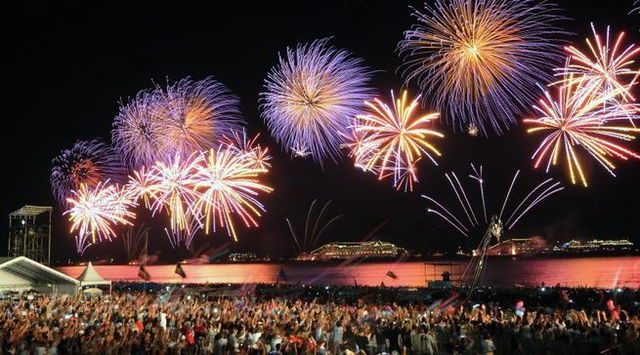
A Popular Holiday
Because of its licentious rites, New Year’s Eve celebrations were not deemed appropriate behavior, especially by religious communities. Influenced by a shift in thinking about religion, modern literature, and immigrants’ customs, by the end of the 19th century, people were looking for more occasions for families to celebrate together.
In the 1870s, several holidays, including New Year’s Day, were recognized as federal holidays. At the beginning of the 20th century, celebrations started to happen all over America. The first Time Square ball drop happened in 1907.
With New Year's being the popular holiday that it is, there are many movies inspired by the date. Perhaps among the most notable are New Year's Eve (2011), About Time (2013), and perhaps the most iconic film of all, When Harry Met Sally (1989).

Other Celebrations
-
Jan 01 WedNew Year's Day Holiday
-
Jul 17 Thu
-
Dec 21 Sun
-
Dec 24 Wed
-
Jan 03 SatMahayana New Year
-
Feb 17 TueLunar New Year

New Year's Eve - Next years
Thursday, 31 December 2026
Friday, 31 December 2027
Sunday, 31 December 2028
2025 Calendars
You might also be interested in

